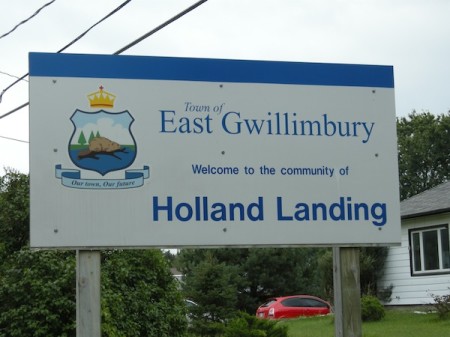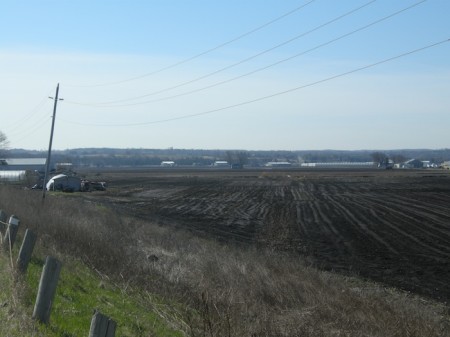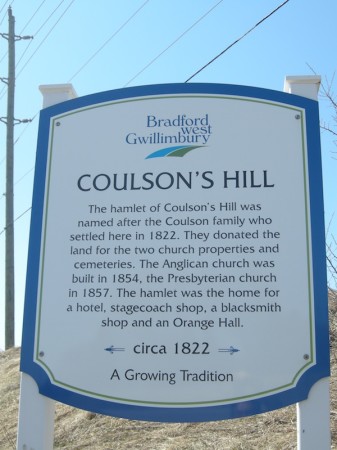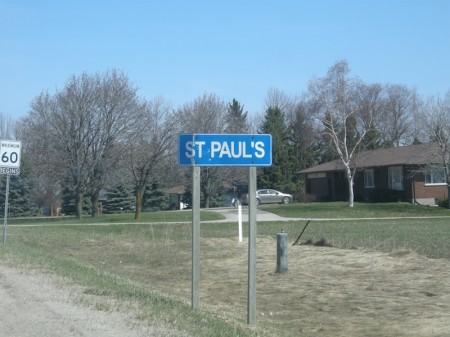 I’m from the burbs, from a family of commuters. But Bradford to Toronto on the GO Train? That’s one heck of a commute, without even thinking about the mention inevitable track delays or having to transfer to the TTC. Needless to say, if it has a GO Train station then it’s a real town. Bradford is not a village or a hamlet or a siding or a corners.
I’m from the burbs, from a family of commuters. But Bradford to Toronto on the GO Train? That’s one heck of a commute, without even thinking about the mention inevitable track delays or having to transfer to the TTC. Needless to say, if it has a GO Train station then it’s a real town. Bradford is not a village or a hamlet or a siding or a corners.
Another Victim of the Southern Ontario Squeeze
Bradford is one of those southern Ontario towns that is at a cross-roads. It’s still small, rural, and agricultural enough to be surrounded by farms, have a big feed elevator siding the railway, and host a goofy festival like the Marsh Mash every May. But it is not so rural that it is immune to the pressures of urbanization that have slowly seeped into its cracks. Bradford is close enough to the big city to be constantly affronted by its demands, but may be just too far away to reap its full share of the benefits. These are the sort of towns that are pinched between two realities, and that are too often never given the choice between one or the other.

Highway 11 heading south into Bradford
With ten thousand people or so it has the usual amenities, including Tim Hortonses, a McDonalds, etc. This is not the kind of place where you need to worry about getting gas. Or getting anything. It even has a 7-11. (So if you’re into slushies – my favourite is Schweppes Ginger Ale, hard to find but worth it – Bradford is a good place to stop.)
But Bradford is unique in the sense that it is not so small that it can only support a couple of third-tier fast food joints, but also not so big that the economies of scale are sufficient to support those generic, sit-down dining franchises like Kelsey’s and Boston Pizza that seem to be infecting every southern Ontario community from a secret mist of spores wafting from some suburban power-centre nerve HQ.
It was refreshing to see the number of independent restaurants for a town this small and this rural. There is old-school greasy roadside fare like BBQ King, two diners, a Portguese bakery, an English chip shop (Cook’s Bay), a Dutch tea room, Bangkok Saigon Noodle, a Mexican restaurant, a souvlaki place, and a couple of independent pizza parlours. And, of course, there are the standard old-school sports bars you’d expect of a rural Ontario town.
ENV305: Informal Travel Blog Training at the U of T
I lose most of my inhibitions anytime food is involved. I’ll eat almost anything, anywhere, with anyone. I’m not particularly big on small-talk, I generally keep to myself, but I don’t have much of a problem strolling into strange restaurants, whether it’s for coffee at a francophone diner in Kapuskasing, a midweek lunch at Sister’s in Englehart or a bustling Sunday morning post-church congregational brunch at The Roosteraunt in Smith’s Falls.

When you’re alone and life is making you hungry you can always go downtown
I attribute this fact to the specialized training I received at university: ENV305 Ecosystems of Ontario. The course description was a complete yawn. The fact that it was only offered in alternating years made it seem unpopular. But the lucky few who enrolled were all surprised when, during the third week of class, we received a syllabus that seemed nothing like the description. It became obvious – the course was made to sound so dry as to attract only the die-hard, and offered only every other year in order to derail word-of-mouth. Because, reading that syllabus, it become clear that the course would have been more appropriately titled: “Drive around Ontario, go hiking in the bush, wolf down greasy diner food, identify rare flora, end the day at a sadsack sportsbar in some tiny rural Ontario town, and then find a way back to your camp to freeze your ass off in a tent. Repeat biweekly.”
So, when you’ve closed the Halloween night party at the Pacific Hotel in Wiarton, scoured Norfolk County for a place that was open after last-call, traded your pita for entry into The Beer Store five minutes after close in Huntsville, bought every last cinnamon bun in the bakery on the last Saturday morning of the cottage season in Bala, and gotten propositioned by cougars whilst dancing to karaoke in your yellow rain coat and rubber boots in Ridgetown, stepping into a local restaurant for lunch is nothing to speak of.
Usually. Joe’s Restaurant and Bar was a bit of an exception.
Just a Little bit Chickens**t
I was about to settle for Subway – it was 11.30 am on a Monday, and most of the aforementioned restaurants were closed – when I saw it. Scribbled hastily in magic marker on a whiteboard in a dark window of a non-descript hole-in-the-wall on the north side of town: Portuguese Chicken Dinner.
Not that there was anything wrong with the restaurant at all. It was fantastic. (Actually, if you want to skip the over-written anecdote below, the food was the best meal I’ve ever had on Highway 11 / Yonge Street. Province-wide.)

Council chambers and courthouse, in Bradford
I waited in the vestibule to be seated. I could see that there was no-one in the dining room or at the bar, but I could hear noise coming from the back. It was still technically morning so I knew I’d have to take a little initiative.
I headed to the kitchen, at the far back of the restaurant, where I found an aproned woman ladeling steaming stews into painted terra-cotta dishes. Seven or eight huge guys huddled around her, all of whom were staring at yours truly.
It’s at times like this that being a guy with a preference in footwear isn’t necessarily a cool or quirky touch.
I have never heard my boots sound louder than they did when I walked across the restaurant. (Do the Portuguese tile everything?) I probably sounded like Mr. Ed. From the sound of my steps maybe those guys expected me to be wearing a sheriff’s costume. Or chaps. Or maybe they wondered if the owners were about to get a shakedown.
Whatever they thought, me in my cowboy boots and jeans and sideburns and my foam trucker hat (it’s not a fashion accessory, I swear, they’re the only baseball caps that fit my huge head), well, when compared to the guys with their plaster-stained t-shirts and steel-toed boots and heavy-gauge jeans sagging under the weight of their tool-belts…I felt like a member of the Village People.

It is Highway 11 here … so there’s gotta be a mural!
I waited my turn and asked the woman what the lunch options were. She responded to me in Portuguese. (My best guess was: something fishy, something else fishy, and something beefy and fishy.) Normally I’d just make a blind choice and chalk it up to ‘an adventure’ if it didn’t turn out. But today, sticking out like a phoney cowboy in an ethnic restaurant, I was off my game. Thankfully my local bank has a “We Speak Portuguese” sign in the window. And I’ve spent years scrolling foreign websites for soccer stats. So after a quick mental translation, I managed to cough out a weak “Falamo ingles?”
She turned to her side and removed the lid off an aluminum tray that was being warmed beside the main dishes. She took its contents to the back. She checked over her shoulder and seemed surprised that I was still waiting. “You?Chicken.Sit.”
I didn’t know whether to be relieved or offended. I’m not used to being the mangiacake. But damn, was it ever a good day to be the mangiacake! That was hands-down the best Portuguese chicken I’ve ever had. Crispy skin gave way to succulent chicken that was cooked just right so the fat had melted into the meat. And the potatoes? Wow, soft, sweet, they yielded to your bite like little pillows of Portuguese potatoey goodness. The piri piri sauce was tangy and spicy but didn’t blow the tastebuds out of your mouth. The rice was, well, let’s just say I’ve never understood why Portguese chicken comes with potatoes and rice. The second is just an unnecessary starch. Give me a veg or something. Anyway, it was the best meal I’ve had travelling all of Yonge Street or Highway 11.

Not only does this windmill contraption count as Bradford’s “big weird thing”, but it also houses “The Guild”, a killer classic car restoration showroom.















































